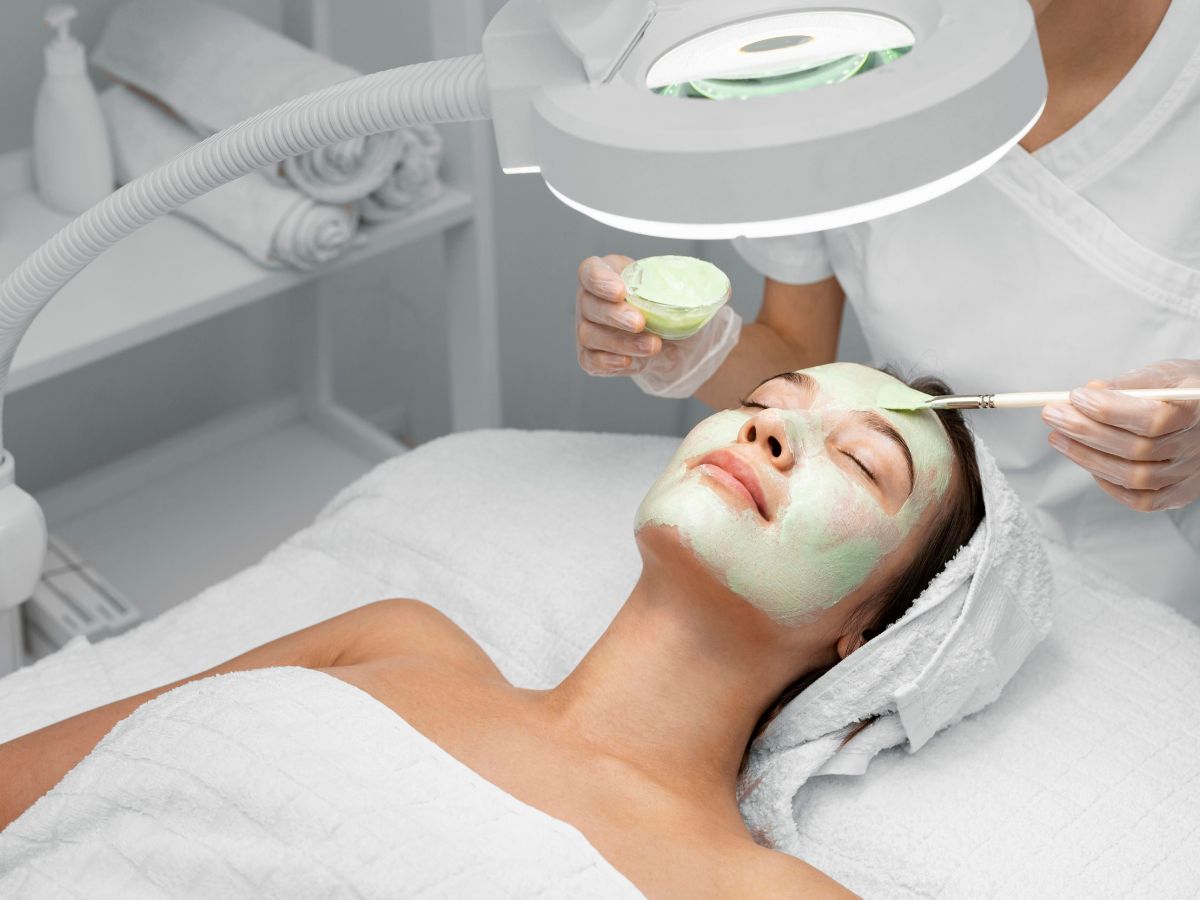
-
Posted By drruby.Sachdev@gmail.com
-
-
Comments 0
Chemical peels have gained popularity for their ability to address a variety of skin concerns effectively. Understanding their types and benefits can help you make informed decisions about which peel is right for you.
What Is Chemical Peel?
A chemical peel involves the application of a chemical solution to the skin, which causes the outer layers to peel off. This process stimulates skin regeneration and improves its texture and appearance.
How Does Chemical Peels Work?
Chemical peels work by exfoliating the skin, removing dead cells and stimulating cell turnover. Different types of peels vary in depth and target specific skin issues such as fine lines, wrinkles, acne scars, and hyperpigmentation.
Types of Chemical Peels
Superficial Peels
Superficial peels are mild treatments that target the outer layer of the skin (epidermis). They use gentle acids like alpha hydroxy acids (AHAs) or beta hydroxy acids (BHAs) to improve skin texture, tone, and clarity. Superficial peels require minimal downtime and are suitable for addressing mild skin imperfections.
Medium Peels
Medium peels penetrate deeper into the skin, targeting the epidermis and upper dermis. They use stronger acids like glycolic acid or TCA (trichloroacetic acid) to treat moderate wrinkles, age spots, and uneven skin tone. Medium peels may require a few days of recovery as the skin undergoes peeling and renewal.
Deep Peels
Deep peels are the most intensive type of chemical peel, penetrating deep into the dermis. They use potent acids like phenol to address severe wrinkles, sun damage, and deep scars. Deep peels provide dramatic results but require a longer recovery period due to significant peeling and redness.
Specific Types of Chemical Peels
Lactic Acid Chemical Peels
Lactic acid peels are gentle and hydrating, suitable for sensitive skin types. They improve skin texture, moisture retention, and overall radiance.
Glycolic Acid Chemical Peels
Derived from sugar cane, glycolic acid peels exfoliate the skin, reduce fine lines, and stimulate collagen production for improved skin firmness and elasticity.
Jessner’s Peel
Combines salicylic acid, lactic acid, and resorcinol to treat acne, pigmentation, and fine lines. It enhances skin clarity and smoothness.
Mandelic Acid Peel
Gentle on the skin, mandelic acid peels are ideal for treating acne, uneven skin tone, and hyperpigmentation, especially for darker skin tones.
Retinol Peel
Utilizes retinol to stimulate cell turnover, improve skin texture, and reduce the appearance of fine lines, wrinkles, and age spots.
Trichloroacetic Acid Peel
Effective for medium-depth peeling, TCA peels target fine lines, pigmentation irregularities, and acne scars for smoother and more even-toned skin.
Salicylic Acid Peel
Ideal for oily and acne-prone skin, salicylic acid peels exfoliate pores, reduce acne lesions, and prevent future breakouts while improving skin texture.
VI Peel
A blend of TCA, salicylic acid, phenol, retinol, and vitamin C, the VI Peel provides comprehensive rejuvenation benefits, including anti-aging and skin brightening effects.
Argilac Peel
Contains argireline to relax facial muscles, reducing the appearance of expression lines and wrinkles without invasive procedures.
Retinoic Acid Peel
Uses retinoic acid to enhance cellular turnover, promote collagen production, and improve skin texture and clarity, particularly beneficial for treating acne and signs of aging.
Phenol Peels
Deeply penetrate the skin to address severe wrinkles, sun damage, and scars by stimulating collagen production and providing long-lasting rejuvenation results.
Conclusion
Choosing the right chemical peel depends on your skin type, concerns, and desired outcomes. Consult with a dermatologist or skincare professional to determine the most suitable peel for you and ensure safe and effective treatment.
Frequently Asked Questions
The duration varies depending on the type and depth of the peel, typically ranging from 15 minutes to an hour.
Post-peel effects may include redness, peeling, and mild irritation, which usually subside within a few days to a week, depending on the peel’s depth.
Potential risks include temporary redness, irritation, changes in skin pigmentation, and rare infections or scarring. These risks can be minimized by following post-peel care instructions and seeking treatment from qualified professionals.
Yes, combining peels with treatments like microdermabrasion or laser therapy can enhance results for comprehensive skin rejuvenation. Always consult with a skincare professional to ensure compatibility and safety.
Ideal candidates have fair to medium skin tones and are in good overall health. They should also have realistic expectations about the results and understand the importance of proper skincare before and after treatment.
Recent Posts
- Bangalore Monsoon Skin SOS: Dr Ruby Sachdev’s Tips to Beat Seasonal Breakouts
- Stretch Marks Demystified: Only These Treatments Really Fade Them—Here’s Why
- Dry Scalp vs. Dandruff? Spot the Difference & End the Itch for Good
- 🧴 Pollution + UV in Bangalore? Why Sunscreen Alone Isn’t Enough—Your Complete Daily Skin Defense
- Glass Skin Treatment in Bangalore: Is It Worth the Hype?




